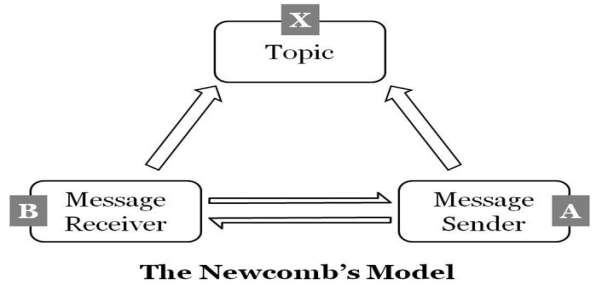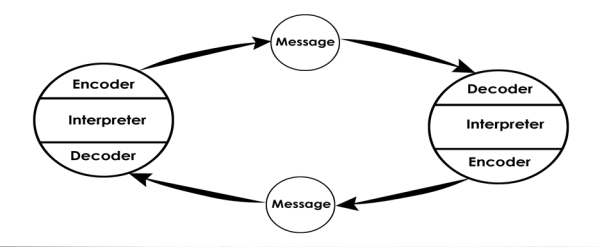Theories of Communication in Education
| ✅ Paper Type: Free Essay | ✅ Subject: Education |
| ✅ Wordcount: 1494 words | ✅ Published: 29 Aug 2017 |
The application of theories, principles and models of communication in education and training
Introduction:
Communication is a process of exchange of facts, ideas, opinions and a means that individuals or organizations share the meaning and understanding with one another.
2.1. Analyse theories, principles and models of communication:
Two schools of thoughts are recognised in the study of communication and these include: The Semiotics School:
The basis for semiotics was laid by Morris-1946, for languages or symbols theory. This school deals with communication as a mixture of sign, symbol and message, which the sender wishes to carry and wants a particular reaction from the recipient of the messages-the sign itself. The semiotics school’s focus is categorised into three areas of general study: syntactic (study of relationship between symbols), semantics (study of symbol to referent relationship) and pragmatics (study of relationship of people with symbol).
The Process School: perceivescommunication as a process, a simple messages transmission and meanings which the sender intends to carry not minding the reaction of the. Instances include art works, culture and music since messages are not formed with any reason, but as an expression of the sender’s thoughts. The recipient can translate the message the way he wants. The process school of thought is also called Linear School.
Communication Theories:
Some studies are based on the influence of communication and media on the human society. One of the earliest studies in this group is:
Hypodermic/Bullet Theory: whichrelies on the powerful principle of media and its consumers are passive and naïve. Furthermore, it states that messages passing through media are like magic bullets which strikes the audience as quickly as possible but also impacts them to carry the required action as quickly as possible.
Two Step Flow of Information Theory:
Paul Lazaefled Elihu Katz, Berelson and Hazelduadet were at the forefront of this theory which states that mass media did not exert the types of impact on the audience as was generally believed. The audience came to an agreement not directly under the impact of mass media but more by means of association amongst themselves. This was the finding of an investigation carried out in the 1940’s during America’s presidential elections.
Models of Communication:
Aristotle’s Model: This model was developed some 2000 years ago. Aristotle (the Greek philosopher) includes in this model the five necessary factors of communication: Speaker, Speech/message, Audience, Effect and Occasion. Aristotle suggests that the speaker should construct a speech for separate audiences on separate instance for separate purpose. This model is applied in public speaking.
Lasswell’s Model (1948): states that for mass communication process to be understood, each of the phases has to be understood. This model elaborates on the effect instead of the message itself. Effect implies observable change in the receiver. It also proposes that any change in the elements will change the effect.
Shannon and Weaver’s Model (1949): also termed the engineering model of communication is an exemplary of the process school of thought. It is also known as the mathematical theory of communication as it gave a technique to the problem of how to convey maximum information in a given channel. It proposed the noise concept. As engineers during World War II, Shannon and Weaver’s main challenge was in finding out the most efficient human communication means.
Newcomb’s Model- 1953: This is the premier of the models to propose the function of communication in a society. The main function in accordance with Newcomb is to sustain equilibrium in a society.

For example:
Tutors come up with a new policy of increasing the school timing from 5 hours to 7 hours.
A – Teachers B – Learners X – Policy or issue
If both learners and tutors are okay with this policy then the communication maintains its equilibrium status between them. Else the communication flow between “A” and “B” becomes trouble in the social system. If “A” or “B” is not willing to accept the policy then it will directly impact the social system and can’t maintain the equilibrium status. So Tutors”A” can convince learners “B” as much as possible. Else they have to make some amendments in the Policy “X” and convince them towards the policy.
Charles E. Osgood’s Model- 1954: In this case, communication is a dynamic process where a healthy interactive association exist between the source and the receiver.
Wilbur Schramm’s Model: Schramm continued from a simple human communication model to a more complex model that justified the total experiences of two people trying to engage in communication and then to a model that considered human communication with interaction between two people.
In his second model, Schramm suggests the idea that only what is shared in the aspects of experience of both source and destination is actually communicated, because only that size of the signal is common to both of them.
The third model views communication as an interactive process where both the receiver and the sender act as encoder, interpreter, transmitter and receiver of signals.

It is a Circular Model, so that communication is something circular in nature.
2.2. Ways in which theories, principles and models of communication can be applied to teaching, learning an assessment
Different people respond to different forms of communication, when we teach we give consideration to the varying types of learners, Visual, Aural, Readers, Kinaesthetic (VARK), we try to design our lessons to include all of the styles. Learners learn in different ways depending on the results produced by a sensory input. Making reference to a condition known as synaesthesia, in which one sensory input produces unexpected results for instance, a synaesthete may see the colour red when they see the number 2 and blue if they see number 3, in some cases sound caused a visual effect for the synaesthete. This may explain why one person responds better when information is given in a verbal format, another responds better if it is visual and so on.
The connections between these different sensory areas of the brain mean that we all have our own unique way of perceiving what is being taught or communicated. This allows for empathy with learners of different styles and this is a good reason to consider how to communicate to learners with different learning styles.
“Communication is the art of successfully sharing meaningful information with people by means of an interchange of experience. The important word is ‘successfully’, which implied that a desired behaviour change results when the receiver takes the message” (Walklin 1993, p. 164). According to Walklin, it is not enough to communicate the instructions, it is also important to deliver praise or constructive criticism in order to encourage and guide the learner into new discovery, if you ask the learner to complete a task a feeling of accomplishment will encourage behaviour conducive to further learning. This is essential to me when teaching as my own learners can often be hostile to the learning process, feeling it has been imposed upon them. It is also important to listen to the students, if you set tasks that are above the student’s current abilities then you are likely to create a communication barrier whereby the student will close in on themselves not wishing to admit they cannot continue and the learning process will stop.
Achieving two way communications with our learners is not straightforward. Barriers can often present themselves. It is crucial that a tutor can identify barriers and help learners overcome them. Petty (2009) proposes that unsuitable level of work, jargon, vocabulary, environmental factors, fear of failure and inapproachable tutor can be barriers to learners learning experience. Whilst I agree in principle to this, I also believe that introducing new vocabulary and language usage is necessary to the learner’s further development.
Reference:
Ars Rhetorica. Edited by W.D.Ross. OCT. Oxford: Oxford UP, 1959.
Bizzell, P. and Bruce Herzberg. (2000). The Rhetorical Tradition: Readings from Classical Times to the Present. NY: Bedford/St. Martin’s. p. 3.
Chomsky, Noam (1956) , Three models for the description of language. Ire Transactions on Information theory, 113-124.
Golden, James L., Goodwin F. Berquist, William E. Coleman, Ruth Golden and J. Michael Sproule (eds.). (2007). The rhetoric of Western thought: From the Mediterranean world to the global setting, 9th ed. Dubuque, IA (USA): p.67.
Gross, Alan G. and Arthur E. Walzer. (2000). Rereading Aristotle’s Rhetoric. Carbondale, IL (USA): Southern Illinois University Press:
Lasswell, Harold D. (1948) The Structure and Function of Communication in Society.
Morris, C. (1946) REVIEWS. Signs, Language, and Behavior. New York, Prentice. Hall Inc., Pp. xi, 365.
Murphy, John J. (1983). “Introduction, ” Peter Ramus, Arguments in Rhetoric against Quintilian. C. Newlands (trans.), J. J. Murphy (ed.). DeKalb IL (USA): Univ. of Illinois Press.
Petty G (2009) Teaching Today (4th Edition), Nelson Thornes.
Shannon,C & Weaver, W (1949), The mathematical theory of communication, University of illinois press: Urbana.
Scramm, W. (1954) Procedures and effects of mass communication in Henry, N.B.(1954)Mass, media and education: University of chicago Press: Chicago.
Walklin, A. (1993) Teaching and Learning in Further and Adult Education. Cheltenham: Stanley Thornes (publishers) Ltd.
Cite This Work
To export a reference to this article please select a referencing stye below:
Related Services
View allDMCA / Removal Request
If you are the original writer of this essay and no longer wish to have your work published on UKEssays.com then please click the following link to email our support team:
Request essay removal


